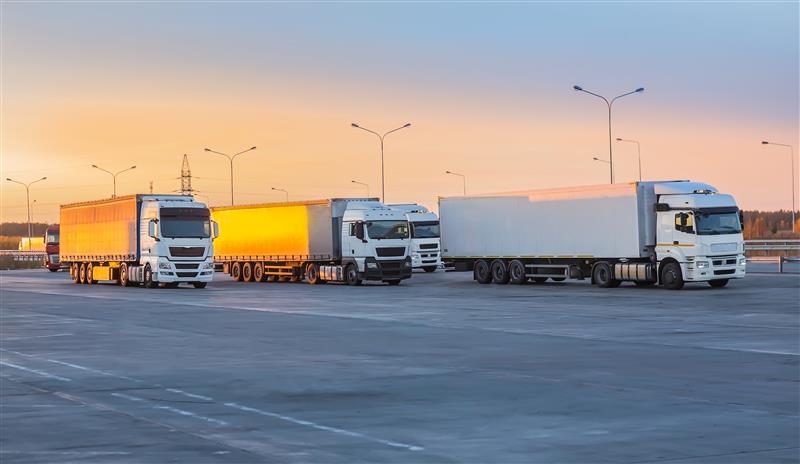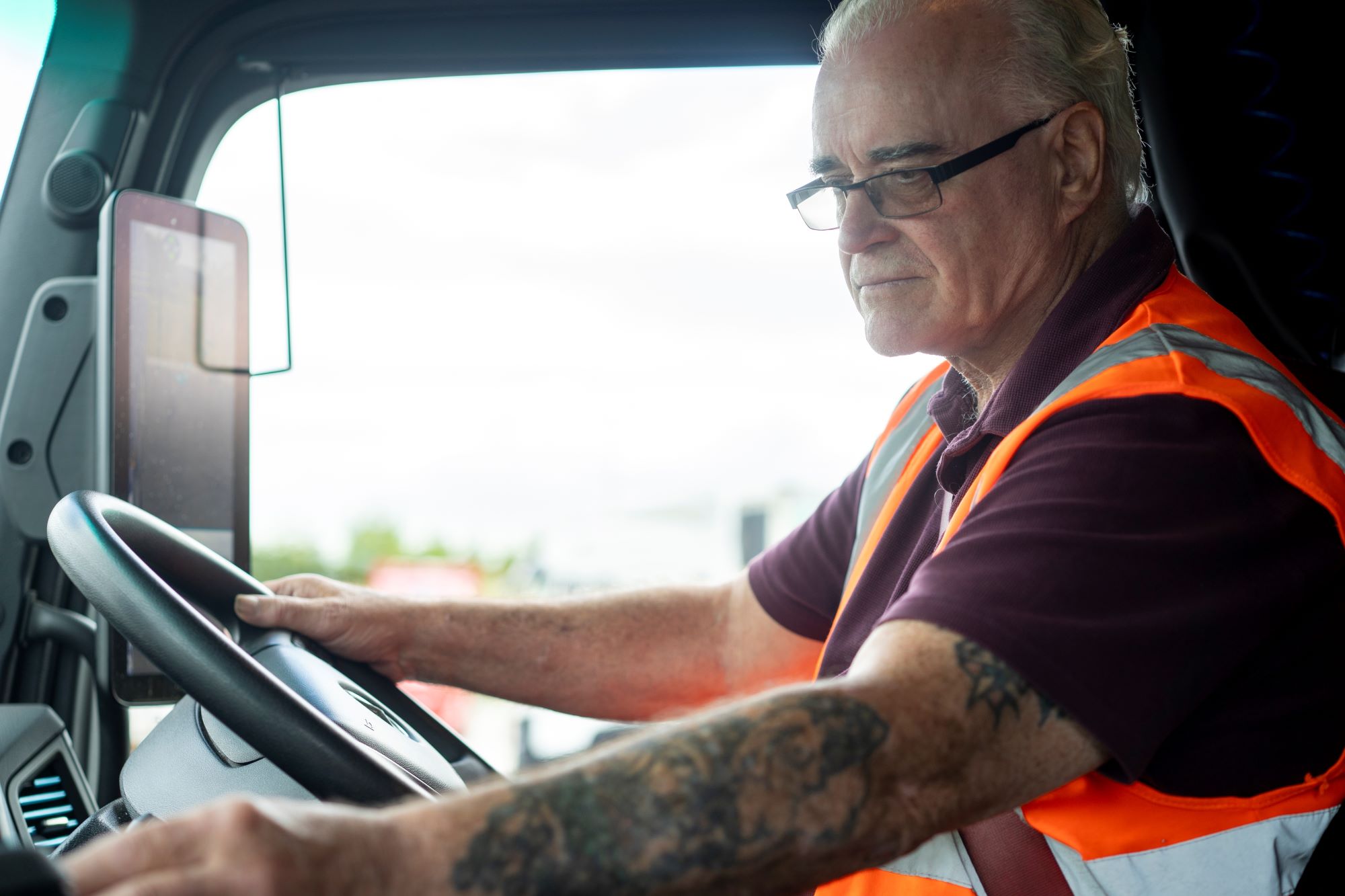
Guest
¿Pueden circular los camiones los domingos en Europa?
Creado: 23/12/2024
•
Actualizado: 23/12/2024
Para sortear las prohibiciones de conducir camiones los domingos en Europa es necesario conocer a fondo las normativas específicas de cada país, las variaciones estacionales y las estrategias eficaces. Invirtiendo en una planificación exhaustiva de las rutas, manteniéndose informadas, optimizando las operaciones y aprovechando la tecnología, las empresas de flotas pueden mitigar el impacto de estas restricciones.
En este blog exploramos las distintas normas de varios países europeos y profundizamos en las mejores formas de adaptarse a ellas.
Normativa específica de cada país
Cada país tiene sus propias leyes sobre la prohibición de conducir los domingos, y éstas pueden variar mucho.
Alemania
Desde las 12 de la mañana hasta las 10 de la noche del último día de la semana, los camiones de más de 7,5 toneladas no pueden circular. Sin embargo, esto no es necesariamente un impedimento. Las operaciones de transporte combinado pueden disfrutar de autorizaciones especiales: se permite el transporte por ferrocarril y carretera en un radio de 200 kilómetros de las estaciones de carga o descarga, y el transporte portuario o por carretera en un radio de 150 kilómetros de los puertos. También está exento el transporte de determinados productos perecederos, como leche fresca, productos lácteos, carne, pescado, frutas y verduras.
Además, algunos vehículos y operaciones no están sujetos a la prohibición, como los vehículos de emergencia que participan en servicios de recuperación, remolque o avería.
Francia
En este territorio, las restricciones a la circulación son similares a las de Alemania y se aplican a los camiones de más de 7,5 toneladas. Estos embargos se producen los domingos y días festivos de 12 de la mañana a 10 de la noche.
Además, hay restricciones los sábados y vísperas de festivos nacionales, con prohibición de circular de 22.00 a 24.00 horas. Y en verano, algunos sábados se prohíbe circular de 7 de la mañana a 7 de la tarde.
Existen exenciones para determinadas mercancías, incluidos los productos lácteos y cárnicos, así como los vehículos de emergencia. Las infracciones de estas prohibiciones pueden acarrear importantes multas, que oscilan entre 750 y 3.750 euros para particulares y empresas, respectivamente.
Italia
En Italia, los domingos y festivos los camiones no pueden circular entre las 9.00 y las 22.00 horas. Cabe señalar que en junio, julio, agosto y septiembre, el embargo empieza antes, a las 7 de la mañana, aunque termina a las 10 de la noche.
El país también impone restricciones adicionales durante los meses de verano. En julio, hay un embargo los sábados de 8 de la mañana a 4 de la tarde, que se amplía de 8 de la mañana a 10 de la noche en agosto.
Aunque estas son las normas generales, es crucial saber que puede haber variaciones locales o restricciones temporales en determinadas rutas. Al igual que en Francia y Alemania, también pueden aplicarse algunas excepciones para determinados tipos de mercancías o servicios de emergencia.
España
En cuanto a España, el escenario es mucho más complejo. Hay un mosaico de prohibiciones regionales, sobre todo en Cataluña. Las restricciones a la circulación de camiones pueden cambiar en función de la normativa local, los días festivos y las rutas específicas. Los camioneros que operen aquí deben consultar las directrices locales para garantizar su cumplimiento.
Además de las prohibiciones de domingos y festivos, también hay limitaciones algunos sábados durante los meses de verano. Generalmente se aplican de 8 a 12 de la mañana, sobre todo en julio y agosto, cuando el tráfico es más denso debido a los veraneantes.
Otros países
En cuanto a otros países europeos, hay muchos que también aplican sus propias prohibiciones de conducir los domingos. Austria, por ejemplo, prohíbe la circulación de camiones de más de 7,5 toneladas los domingos de 12 a 22 horas. Algo parecido ocurre en Suiza, donde los vehículos de más de 3,5 toneladas no pueden circular en todo el día.

Estrategias para empresas de flotas
Para sortear las restricciones a la circulación de camiones de los domingos, es crucial una planificación eficaz de las rutas. Mediante el uso de tecnología avanzada y pensamiento estratégico, los operadores de flotas pueden optimizar sus procesos.
Utilizar GPS y software de planificación de rutas
El uso de modernos sistemas GPS y software de planificación de rutas permite a las flotas y a sus conductores identificar los trayectos más eficientes y evitar las zonas con prohibiciones de circulación. Estas herramientas pueden proporcionar actualizaciones en tiempo real sobre el estado de las carreteras, garantizando que los camioneros puedan tomar decisiones informadas sobre la marcha.
Considerar rutas alternativas
Otra idea es explorar distintas formas de llegar al lugar en cuestión. Aunque puede resultar tentador seguir el camino más directo, las rutas alternativas a menudo pueden ahorrar tiempo y evitar posibles multas. Estos desvíos pueden ser algo más largos, pero pueden ayudar a sortear zonas con embargos estrictos, lo que permite unas operaciones más fluidas.
Planificar los retrasos
Ante la posibilidad de contratiempos causados por la congestión del tráfico o embargos de vehículos, también es prudente que las empresas de flotas prevean tiempo adicional en sus calendarios. Un enfoque proactivo ofrece mejores oportunidades para que las entregas sigan siendo puntuales, incluso ante retos inesperados.
Mantenerse informado
Mantenerse informado sobre la normativa y las condiciones del tráfico en tiempo real es igualmente crucial. Por eso es aconsejable utilizar aplicaciones y sitios web específicos, que ofrecen a los camioneros actualizaciones en directo sobre cierres de carreteras, accidentes y atascos, lo que les permite ajustar las rutas y evitar retrasos.
Muchas asociaciones de transporte y proveedores logísticos ofrecen servicios de suscripción a alertas de tráfico. Al suscribirse a estas notificaciones, los operadores de flotas pueden recibir información sobre cualquier cambio en las normas de conducción, garantizando así su cumplimiento.
Aprovechar la tecnología
La utilización de la tecnología puede mejorar la eficacia operativa y el cumplimiento de la normativa sobre tiempos de conducción.
Los sistemas telemáticos permiten a las empresas de flotas controlar la ubicación de los vehículos, el consumo de combustible y el comportamiento de los conductores. Los datos pueden ser muy valiosos para optimizar las rutas. Además, el mantenimiento de cuadernos de a bordo digitales simplifica el mantenimiento de registros, lo que proporcionará documentación esencial en caso de auditoría.
Igualmente importante es la tecnología para simplificar los pagos, y ahí es donde SNAP puede ayudar.
Regístrese en SNAP
Tanto si busca un aparcamiento seguro, un lavado de camiones u otros servicios para sus flotas, nuestras soluciones hacen que pagar por ellos sea mucho más cómodo. Eche un vistazo a lo que SNAP puede ofrecerle hoy mismo.



